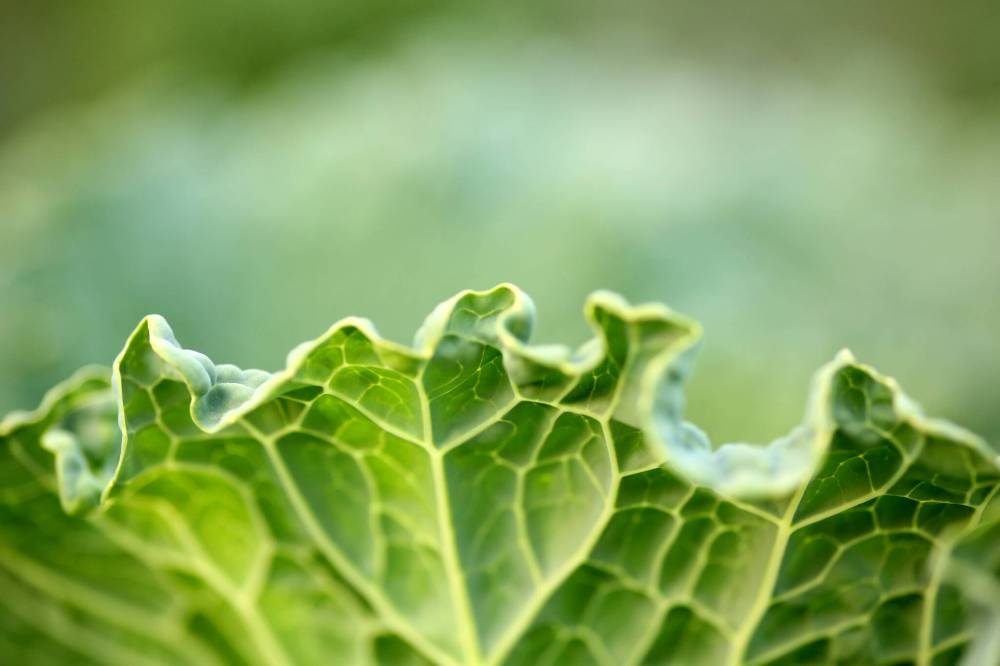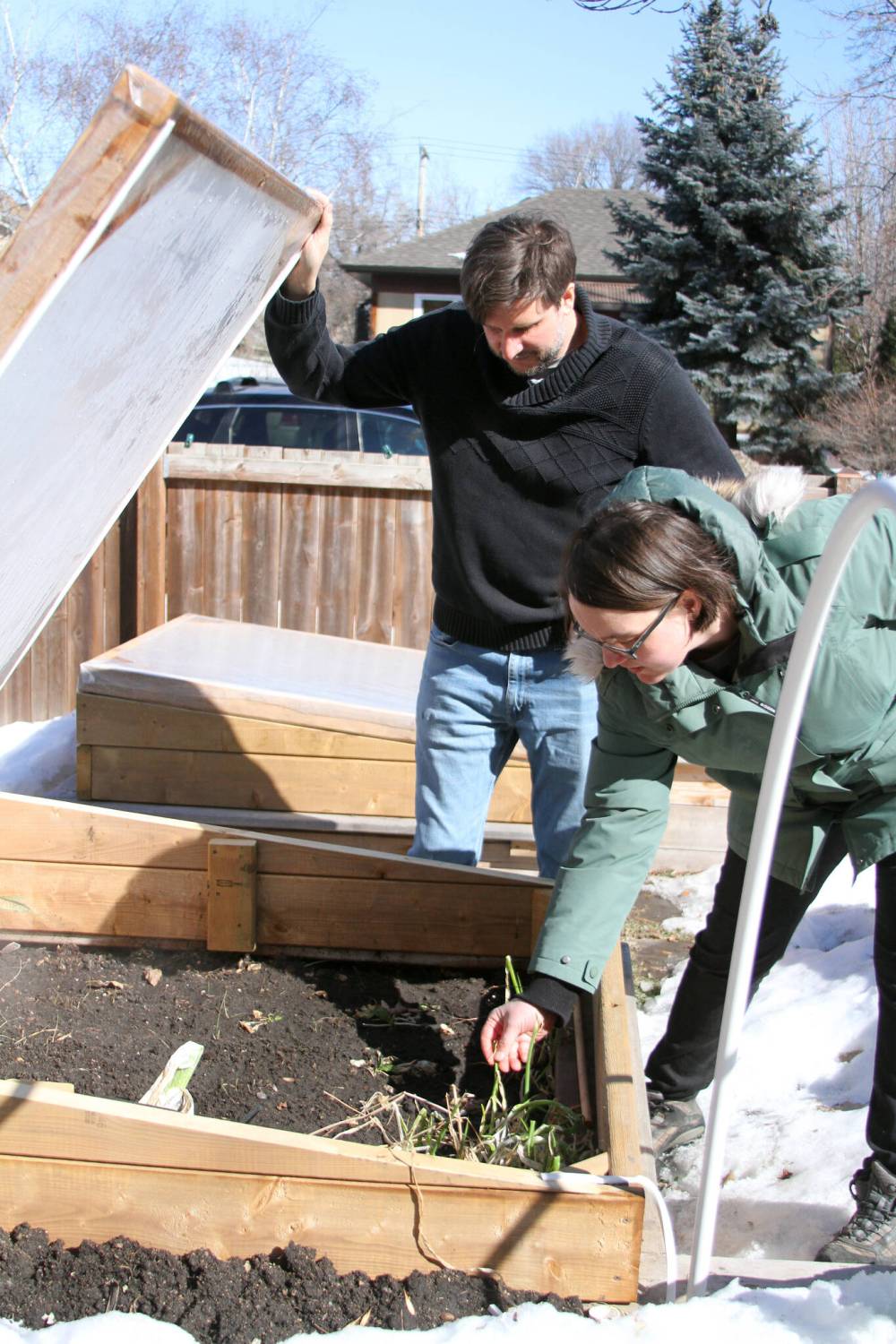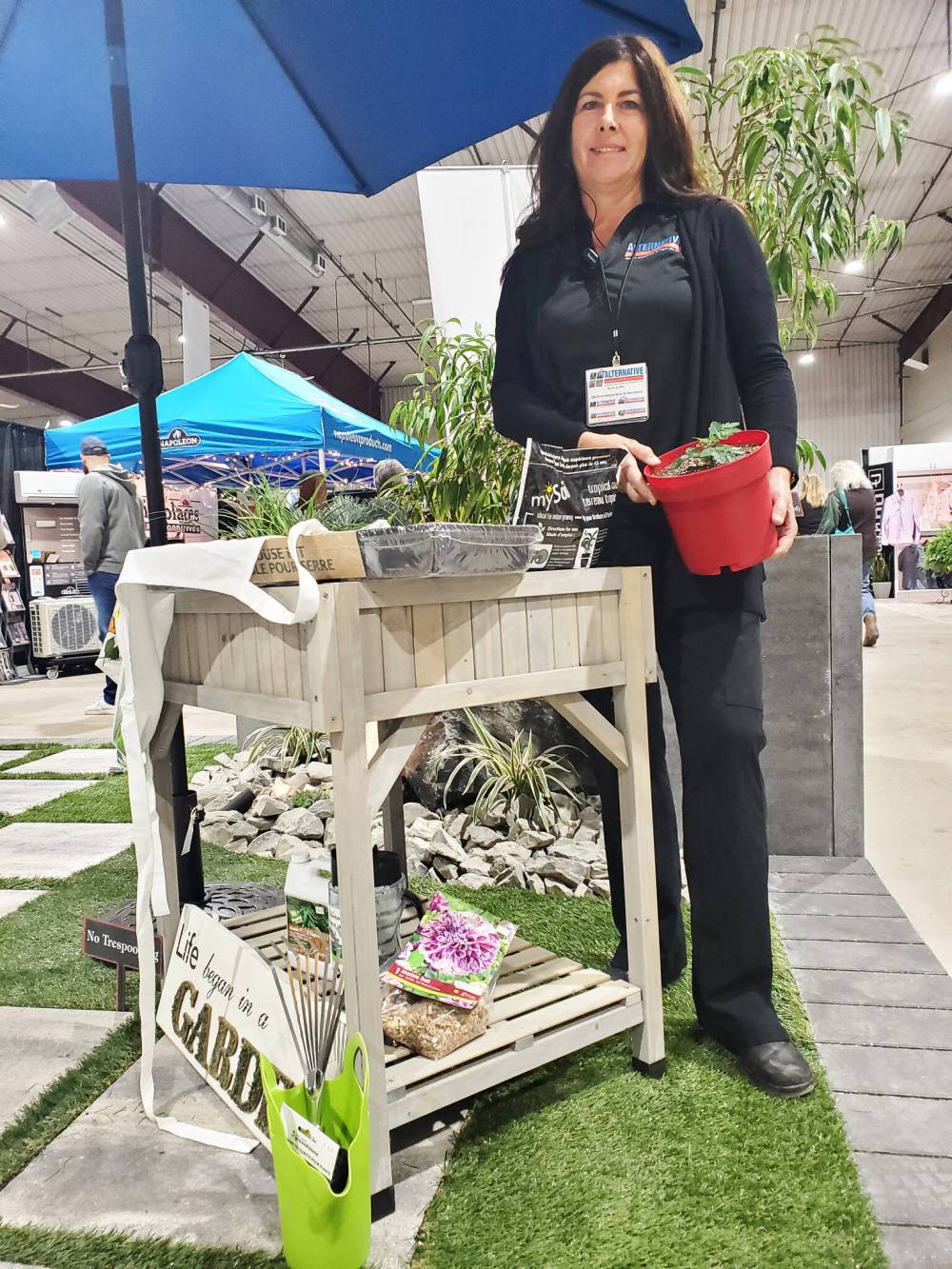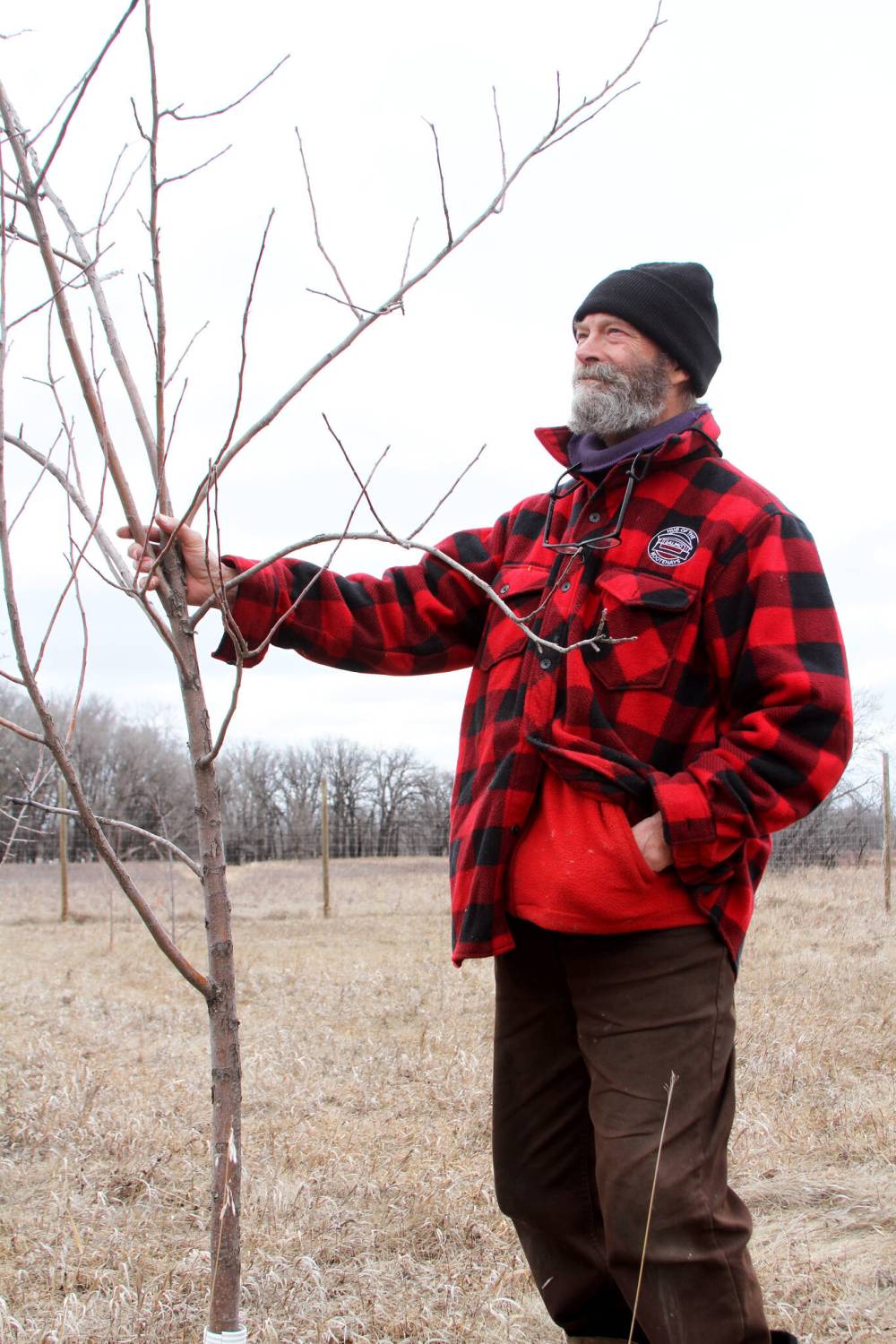A greener future: Climate change and the desire to be self-sufficient are driving the sustainable gardening scene in Brandon
Advertisement
Read this article for free:
or
Already have an account? Log in here »
We need your support!
Local journalism needs your support!
As we navigate through unprecedented times, our journalists are working harder than ever to bring you the latest local updates to keep you safe and informed.
Now, more than ever, we need your support.
Starting at $15.99 plus taxes every four weeks you can access your Brandon Sun online and full access to all content as it appears on our website.
Subscribe Nowor call circulation directly at (204) 727-0527.
Your pledge helps to ensure we provide the news that matters most to your community!
To continue reading, please subscribe:
Add Brandon Sun access to your Free Press subscription for only an additional
$1 for the first 4 weeks*
*Your next subscription payment will increase by $1.00 and you will be charged $20.00 plus GST for four weeks. After four weeks, your payment will increase to $24.00 plus GST every four weeks.
Read unlimited articles for free today:
or
Already have an account? Log in here »
Hey there, time traveller!
This article was published 22/04/2022 (1314 days ago), so information in it may no longer be current.
Gardening for some isn’t a pastime; it’s a way to feed themselves, their community and in some cases, limit their carbon footprint.
One group in Brandon is trying to bring back localized food production through the Assiniboine Food Forest, situated on the eastern tip of Rosser Avenue.
The organization has three parts to its mission: regenerate and conserve the biodiversity of the ecosystem, produce healthy food in sustainable ways for humans and wildlife and teach visitors about the environment in a thriving natural landscape.

The food produced in the forest is donated to charities across the city. Board members also perform wild foraging in the summer months, gathering plants such as licorice, mushrooms, nettles, burdock root and saskatoons.
So far, they’ve had some success with their Legacy Orchard project, planting fruit trees and berry vines in a fenced-in area to prevent deer from decimating them, said board chair and property owner Dave Barnes.
They have been working on this project since 2017, when they received a grant from the Brandon and Area Community Foundation to plant the orchard.
A food forest is a type of land management that allows people to cultivate food in a way that mimics a natural forest. They work with the ecosystem to produce food instead of clearing land to grow a few crops.
Before peeling back the fencing around the orchard, Barnes expressed concern the harsh winter may have killed the fruit trees.
However, closer inspection showed many had not only survived, but were budding.
“This is great to see, the trees are doing well again,” he said. “Some of these gave me fruit last year. It takes a few years to really establish a viable orchard, but this is very promising.”
There was some frost damage from previous years. Some of the apple trees, unfortunately, had grey and brittle branches, indicating the deep cold killed it. However, at the bases of some, fresh budding branches were emerging. A positive sign for the overall wellness of the tree, because it meant the root system beneath was healthy and drawing nutrients from the soil.
The excitement grew as more optimistic indicators were unearthed. Patrolling the perimeter inside the fence, Barnes knelt down to peel back the dead grasses and reveal spindly arms of grape vines, most of which were malleable and displayed a tight, reddish-brown skin. A sure sign they were alive and beginning to regrow.
Walking around the grasslands next to the orchard, he points out some non-native weeds making their way out of the groundcover. Bending down to pick it out, part of his work is getting rid of as many of the invasive weeds to make room for the native grasses and plants to flourish, again.
Farming should work with nature as much as possible, he said. There are plenty of food plants that can exist alongside the natural environment. The Assiniboine Food Forest is where they are experimenting to see what is sustainable.
While reflecting on his work, he pointed out the remnants of a pig barn just across from a maple syrup production shack, which is part of his Treesblood Maple Syrup business.
For him, the concrete leftovers of the barn represent what was the beginning of industrial farming in the area, and poetically what he hopes is ground zero for the start of a new era in food sustainability.

“When I bought this property, I was working to save it from development, and start a new farm,” he said. “That barn housed 700 pigs at a time, the original farmers raised [them] for meat. Raising animals in captivity isn’t natural, or good for our environment or overall community health.”
Current agriculture practices are major contributors of greenhouse gas emissions, producing 17.3 billion metric tonnes of GHGs every year, according to a report published in the journal Nature Food last September. This represents 35 per cent of all global emissions.
While he isn’t against livestock farming, Barnes said the methods civilization has been using are not sustainable. Animals kept indoors and in pens for the majority of their lives produces a lot of waste and greenhouse gas emissions.
It wasn’t long ago when personal food gardens were a necessity. During the Second World War, people were encouraged to have small “victory gardens” to be more self-sufficient and have access to fresh produce as rationing restricted access to a lot of foodstuffs, as well as grow food to send to the military.
It’s slightly ironic that a city built on farming has little in the way of dedicated local food production, Barnes said. Much of what is grown around the region ends up being shipped away for processing and distribution around the world.
Such large-scale operations help support the economy but don’t contribute to local food sustainability.
The motivation for Barnes is multi-pronged. Getting food to people faster is a major concern, but environmental issues are equally important to him, and they go hand-in-hand. Current supply chains that see food flown or shipped halfway around the world using fossil fuels isn’t sustainable.
A report from the United Nations’ Intergovernmental Panel on Climate Change released last August points out that rapid changes must be made now to limit permanent impacts on the environment and climate, but some are already locked in as seen with recent heat waves, floods, hurricanes and droughts. The report states that unless more aggressive actions to cut carbon emissions are not implemented soon, the average global temperature is likely to reach or exceed the 1.5 C warming threshold within 20 years.
That increase in temperature is generally seen as the most with which humanity could cope without suffering widespread economic and social upheaval that will be caused by climate disasters triggered by warming temperatures.
“I’m worried about my grandchildren’s future, because we see the climate is already changing,” he said. “We have huge floods, once-a-century storms becoming more frequent, atmospheric rivers, droughts and fires. We need to go back to small-scale and localized farming and seasonal eating to save ourselves.”
The farm has garnered attention outside of Brandon. There has been several visits from groups looking at how other communities are starting their own local growing operations, said Olivia Boyce, program co-ordinator for Food Matters Manitoba, based out of Winnipeg.
The organization is dedicated to establishing food security in the province. Boyce said Food Matters is impressed with what the Assiniboine Food Forest is doing.

“It’s amazing to learn about the plants and foods that grow in and around Brandon, how to harvest and preserve them, or if a person doesn’t feel comfortable harvesting plants in the city at least having the opportunity to learn about how and where they grow and how to find them,” Boyce said in an email.
Food Matters takes inspiration from communities that have successfully incorporated fruit trees, orchards and gardens to create healthier and greener spaces.
Food Matters is promoting food security in its own way by working with the John Howard Society in Brandon to reroute food that was destined for the landfill to people who need it.
Every year, Food Matters Manitoba hosts a community collaboration. In 2021, the organization held Edible Brandon, a virtual event that brought the Westman community together to talk about urban agriculture, with a focus on the role of community gardens to grow, raise and harvest food within the city.
“People in Brandon have become much more interested in and engaged in food growing since the start of the pandemic,” Boyce said. “It’s a great activity to spend time outside, in community; it’s good for your mental health and provides light exercise as well as the best-tasting food you can get.”
Her organization offers a Rooting for Local Food project that distributes seedlings grown in the community to non-profit organizations that disperse them to folks through their networks.
More city residents are turning to their own backyards to produce food for themselves and their neighbours. Steffi Lazerte and Alex Koiter consider themselves lucky to have the time and space to set up their own food gardening operations.
Each year, the couple converts the property around their home on Third Street into a series of produce patches and raised beds. They also have a plot in a nearby community garden to grow their own potatoes and a strip of land on a friend’s family acreage where they have more gardens.
Koiter and Lazerte acknowledge their gardening is more about freshness and having rarer species on-demand.
“If you are not particular about variety, then gardening for food probably doesn’t appeal to you,” Koiter said. “But for us, the things we grow, like tomatoes, we can get the varieties we want, and the freshness is a world of difference compared to the supermarket.”
In terms of affordability, it really depends on the price point one is using to compare savings, Lazerte said. Comparing actual cost to produce vegetables and fruit in their gardens to the price of the same produce in a supermarket, there isn’t much difference. However, compared to an organic farmer’s market, there are noticeable savings.
There are some crops Lazerte and Koiter try to grow to save money. Both eat a diet rich in dark greens, which they incorporate in smoothies. The base ingredient is kale, which Lazerte tries to grow every year because the price at grocery stores is shocking for her.
“[Kale] is so easy to grow and it’s almost a weed in our garden, but I don’t understand why it’s $4 for a wee bunch,” she said. “It’s a basic product; why is that so expensive?”

Inflation has been hitting all foodstuffs, and produce is no exception.
The 2022 Canada’s Food Price Report, published by Dalhousie University annually, reported the price of produce is predicted to rise between five to seven per cent on average. A family of four is expected to pay $14,767.36 for food, an increase of up to $966.08 from 2021’s total annual cost. This is the highest increase since the report began publication 12 years ago.
The report cites multiple factors, some caused by the COVID-19 pandemic, including supply-chain disruptions, labour shortages, as well as extreme weather events and inflation.
Another bonus of growing their own crops is maintaining biodiversity in the environment. Lazerte said large-scale farming can hinder biodiversity as large swaths of land are cleared to grow a few crops.
“I know from my perspective, large farms like potato farms are bad for birds because there is no habitat for them to nest and raise [their] young,” she said. “When you go from cattle rangeland to a potato farm, you lose nesting grounds because at least in a rangeland, it’s more natural and birds can live there, but they can’t when it is switched to a potato farm.”
To protect their raised beds, Lazerte and Koiter cover them in cold frames — a type of greenhouse cover to trap heat and keep out the elements — mulch and tarps. A quick inspection of their cold frames in late March showed promise, with some green onions and herbs poking out of last fall’s dead leaves and mulch groundcover.
Meanwhile, some of their produce gets an early start indoors with specialized greenhouse lighting.
The couple utilize every part of their property to grow something. In their backyard, they maintain some native trees and shrubs, as well as hops and berries growing on their deck. It seemed like a waste of resources to keep a grass lawn, Koiter said.
The interest in food gardening in Brandon has been on the rise, according to Karin Griffin, general manager and co-owner of Alternative Choice Garden Centre.
In 2020, the garden centre sold out of many vegetable and herb plants, which is highly unusual compared to previous years, Griffin said. Noticing the trend, the centre shipped in more plants in 2021 and this year.
“[In 2020], we couldn’t get any more of anything, which never happened before,” she said. “We could always find items like apple trees, raspberries, strawberries, and vegetables, [but] everything was gone.”
Even houseplants saw a sharp increase in demand as people were stuck in their homes during the pandemic and wanted to add some extra greenery to their spaces.

People are looking to utilize more space in their gardens for food production, but for many, it is more about variety and growing something that is easy and produces a high yield in a short time. One example of this is a new cherry tomato the centre is selling. It’s classified as a “dwarf” variety as it only grows six to eight inches high, but produces a lot of fruit.
Another popular item are the “VegTrugs” — raised, portable garden planters on wheels that offer more surface area to grow plants in a compact area.
“They are great because not everyone has a big property to grow big gardens, so these give people the ability to plant veggie gardens and the plants give them a lot of food for a small space,” Griffin said.
Gardening to grow food in an effort to become more self-sufficient is just as much about psychology as it is about nutrition. Griffin said Alternative Choice Garden Centre has been helping people build green spaces for 24 years and for many, growing even a small garden can give them confidence.
Gardeners may save only so much money with their own food plots since the season in Manitoba is very short, so it’s difficult to get a substantial harvest. However, the climate in southern Manitoba supports a wide variety of plants, and popular produce can be frozen or preserved for future consumption.
People need to think about local food sources again, but being the home of Canada’s largest food forest habitat regeneration and conservation project is encouraging for Barnes. The organization’s ultimate vision is to have it be part of a larger local food production network, perhaps with memberships that allow harvesting privileges, and have the forest be a hub for research and education.
While it will take a few years before the Assiniboine Food Forest is fully established, one thing is for sure — sustainable gardening has a promising future in Brandon.
» kmckinley@brandonsun.com
» Twitter: @karenleighmcki1
